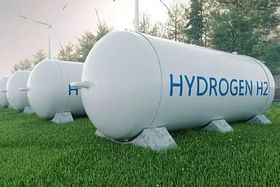In a move to promote renewable energy, the Maharashtra state cabinet on Tuesday (4 July) approved the state’s Green Hydrogen Policy.
Maharashtra, thus, became the first state to announce a policy for green hydrogen — hydrogen produced by splitting water by electrolysis using renewable energy.
The state cabinet also sanctioned a budget of Rs 8,562 crore for the implementation of the policy by way of subsidies and benefits to companies generating the green hydrogen.
The policy aims to “make Maharashtra a leader in green hydrogen and its derivatives ecosystem in the country”. The current hydrogen demand of the state is 0.52 million tonnes per annum and may reach 1.5 million tonnes by 2030.
The state policy is in line with the National Green Hydrogen Mission (NGHM) approved by the Union Cabinet in January 2023 with an outlay of Rs 19,744 crore from FY 2023-24 to FY 2029-30.
The overarching objective of the National Green Hydrogen Mission is to make India a global hub for production, usage and export of Green Hydrogen and its derivatives.
To achieve the above objectives, the Mission will build capabilities to produce at least 5 Million Metric Tonne (MMT) of Green Hydrogen per annum by 2030, with potential to reach 10 MMT per annum with growth of export markets.
Green Hydrogen
Hydrogen is a key industrial fuel that has a variety of applications including the production of ammonia (a key fertilizer), steel, refineries and electricity.
The energy industry refers to different ‘types’ of hydrogen to differentiate how it is produced. Although the production of hydrogen remains primarily ‘grey’ at the moment, the future of hydrogen is ‘green’.
The vast majority of industrial hydrogen is currently produced from natural gas through a conventional process known as steam methane reforming (SMR). The standard SMR process produces what is known as Grey Hydrogen and has the major disadvantage of releasing large quantities of by-product CO2 into the atmosphere – the main culprit for climate change.
Grey hydrogen has increasingly been produced also from coal, with significantly higher CO2 emissions per unit of hydrogen produced so much that it is often called brown or black hydrogen instead of grey.
The diverse pathways to produce hydrogen mean we can produce it using renewable energy sources, such as wind or solar. That makes green hydrogen the cleanest option – hydrogen from renewable energy sources without CO2 as a by-product.
Green hydrogen is defined as hydrogen produced via electrolysis, the splitting of water into hydrogen and oxygen with electricity generated from renewable energy sources such as solar or wind. This is the most environmentally sustainable way of producing hydrogen
Key Features
- The policy aims to incentivize projects that procure renewable energy through open access, whether from in-state or out-of-state power distribution companies, power exchanges, or for self-consumption.
- According to the policy, there will be a 50 per cent concession in transmission charges and a 60 per cent concession in wheeling charges for the next ten years from the implementation of the project.
- Standalone power plants will receive a 100 per cent concession in power tariff for the next ten years, while hybrid power plants will receive this concession for the next 15 years. Additionally, both types of plants will be exempted from cross subsidy and surcharge.
- Projects related to green hydrogen production will also need to be registered with the Energy Office.
- Land designated for green hydrogen projects will receive complete exemptions from local body tax, non-agricultural tax, and stamp duty.
- A subsidy of Rs 50 per kg will be provided for blending green hydrogen into gas for a period of five years.
- First 20 green hydrogen refueling stations will receive a 30 per cent capital cost subsidy, with a maximum limit of Rs 4.50 crore.
- First 500 green hydrogen-based fuel cell passenger vehicles will be eligible for a capital cost subsidy of up to Rs 60 lakh per vehicle, subject to a 30 per cent subsidy.
- Rs 4 crore per annum for ten years for recruitment of skilled manpower, their training, skill development, single window facility


